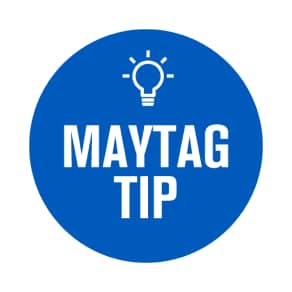
What Is Fabric Softener?
Fabric softener is a laundry additive that is formulated to smooth and coat fibers to help fabrics feel softer, combat wrinkles, reduce static and add a fresh fragrance to your laundry. You can find fabric softener in the form of powder, liquid or dryer sheets.
From softening clothes to simply making them smell better, learn how fabric softener may be a good addition to your laundry routine.
Do You Need Fabric Softener?
Fabric softener is an optional addition to your laundry routine that should only be used on fabrics made with natural fibers. Fabric softener is not formulated to clean, so you do not need to use it with every wash cycle.
Fabric Softener vs. Detergent: What's the Difference?
The difference between fabric softener and detergent is their purpose. Laundry detergent is formulated to clean your clothes and loosen soils and stains, whereas fabric softener is designed to smooth and add scent to the fabric of your clothes.
Detergent is an integral part of the wash cycle, while fabric softener is optional and should only be used on natural fiber fabrics like cotton.
Types of Fabric Softeners
Learn more about the different types of fabric softeners to discover the right option for the way you care for your laundry.

Liquid Fabric Softener
Liquid fabric softener is added to your load of laundry during the final rinse cycle and is either added manually or with the help of an automatic built-in dispenser. Always consult your garment’s laundry care label before using a liquid fabric softener.

Powder Fabric Softener
This variety of fabric softener is less common. It can be added to your rinse cycle according to individual packaging instructions.

Dryer Sheets & Dryer Balls
This option is great if your washer doesn’t have a built-in fabric dispenser, as you simply toss the dryer sheets or dryer balls inside the dryer before starting the drying cycle.
Dryer balls are a great option for those with sensitive skin as they do not include fragrances that can irritate sensitive skin.
What's the Difference Between Fabric Softener vs. Fabric Conditioner?
Fabric softeners help to soften and freshen fabrics, while the ingredients in fabric conditioner can help combat the pilling, fading and stretching that often occurs as a result of normal wear and tear.
Can Fabric Softener Damage Clothes?
Certain fabrics respond better to fabric softeners than others. The lubricants used in fabric softeners are designed to coat fibers and may leave behind a film that affects the safety and effectiveness of certain materials. Avoid using liquid softener and dryer sheets on the following materials and always check the care label on each item before use.

Athleticwear & Microfiber
Using softeners may leave behind a coating that interferes with the moisture wicking and stain absorbing technology of these fabrics.

Towels
Though using fabric softeners on towels may seem like a natural fit, it can reduce the absorbency of the fabric, hindering its ability to soak up water.
Using softener in moderation won’t affect absorbency as much and some may feel the trade off of slight reduction in absorbance is worth the softened touch or fragrance.

Flame-Resistant Clothing
Items like kids’ sleepwear are typically made with flame-resistant fabric for safety, but fabric softeners may coat the fibers, which may reduce the fabric’s ability to self-extinguish.

Water-Repellent Fabric
Softeners can prevent these fibers from repelling water as designed, impacting their effectiveness.

Consider Natural, More Allergy-Friendly Alternatives
If you have fragrance or dye allergies, be aware that some liquid fabric softeners and dryer sheets can cause adverse skin reactions in those with sensitivities.
For a gentler method to soften clothes and reduce odors, add ½ cup (for a large load) of white vinegar to your rinse cycle when the tub is full of water.


How Much Fabric Softener Should I Use?
It’s important to use the right amount of fabric softener for the best results. Using too much liquid softener or an excessive amount of dryer sheets can result in build-up on your clothes or appliances, and lead to issues like a dirty agitator. As there can be some variance in dosing based on brand and variety, you can find out how much softener is right for your load by looking at the individual packaging.
Step 1: Measure
For liquid or powder softener start by measuring out the correct amount for your load, as indicated on the fabric softener packaging.
Step 2: Add Fabric Softener
Add liquid fabric softener into the designated softener dispenser at the start of your wash, if available on your washing machine. Check your owner’s manual for specifics.
If your washer doesn’t have a dispenser, add liquid or powder fabric softener manually during the final rinse cycle when the tub is full of water. Do not add softener during the wash cycle, as it will rinse away the effects of the softener.
Step 3: Add Dryer Sheets or Dryer Balls INSTEAD
Alternatively, you can simply add dryer sheets and dryer balls at the start of the cycle. It’s not recommended to use both fabric softener and dryer sheets since they serve very similar purposes. Reference the packaging for correct usage.

Avoid Staining or Spotting When Manually Adding Liquid Softener
Pour softener into open pockets of water where there is space around clothes, avoiding direct contact with fabrics. This helps prevent staining from oily components often present in liquid softeners.
Shop All Maytag® Washers
You can rely on Maytag® washers to clean tough messes. Explore top load and front load options with features that fit your family’s laundry needs, like the Extra Power Button that boosts stain fighting or Advanced Vibration Control™ that keeps disruptive noises to a minimum.
